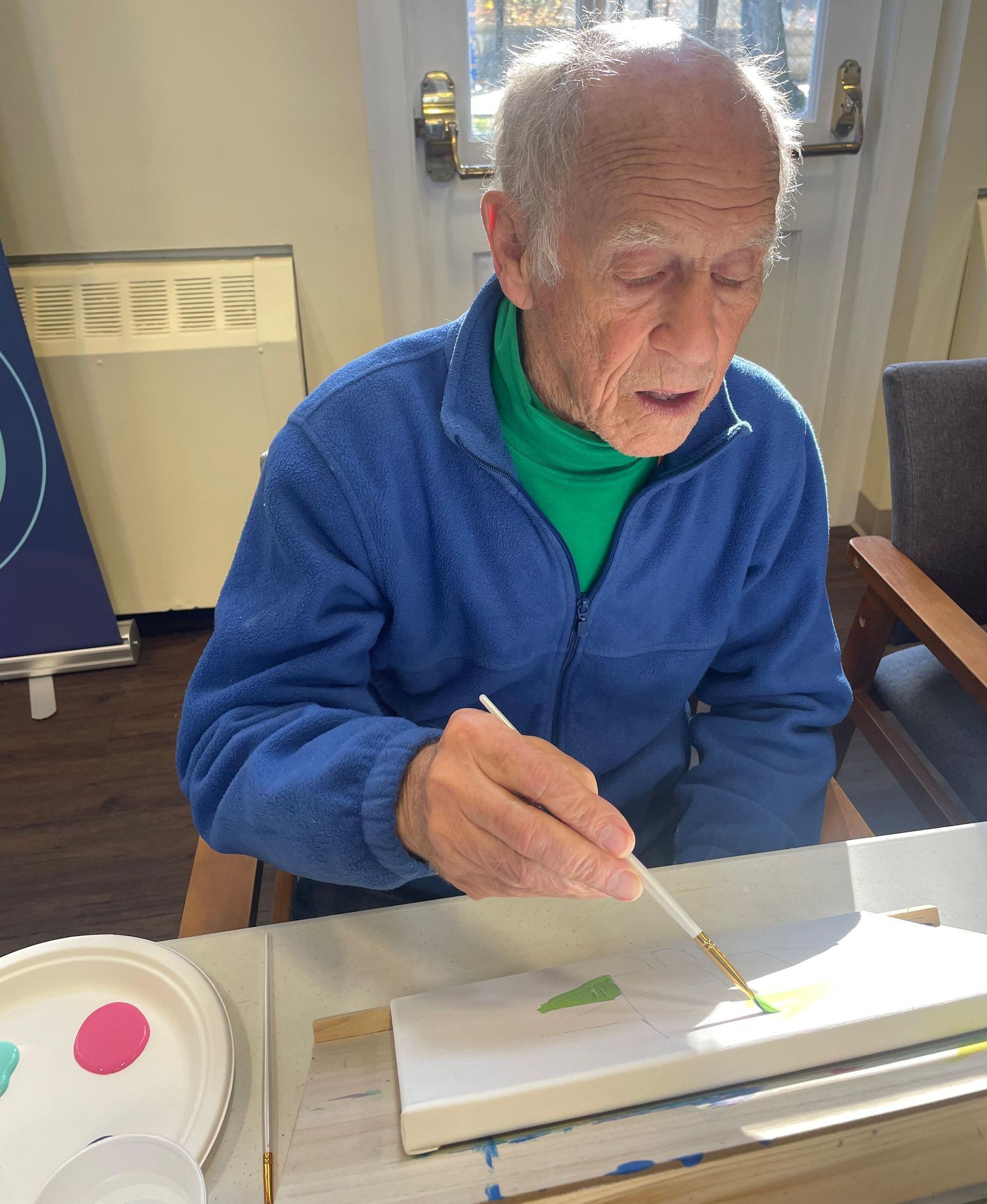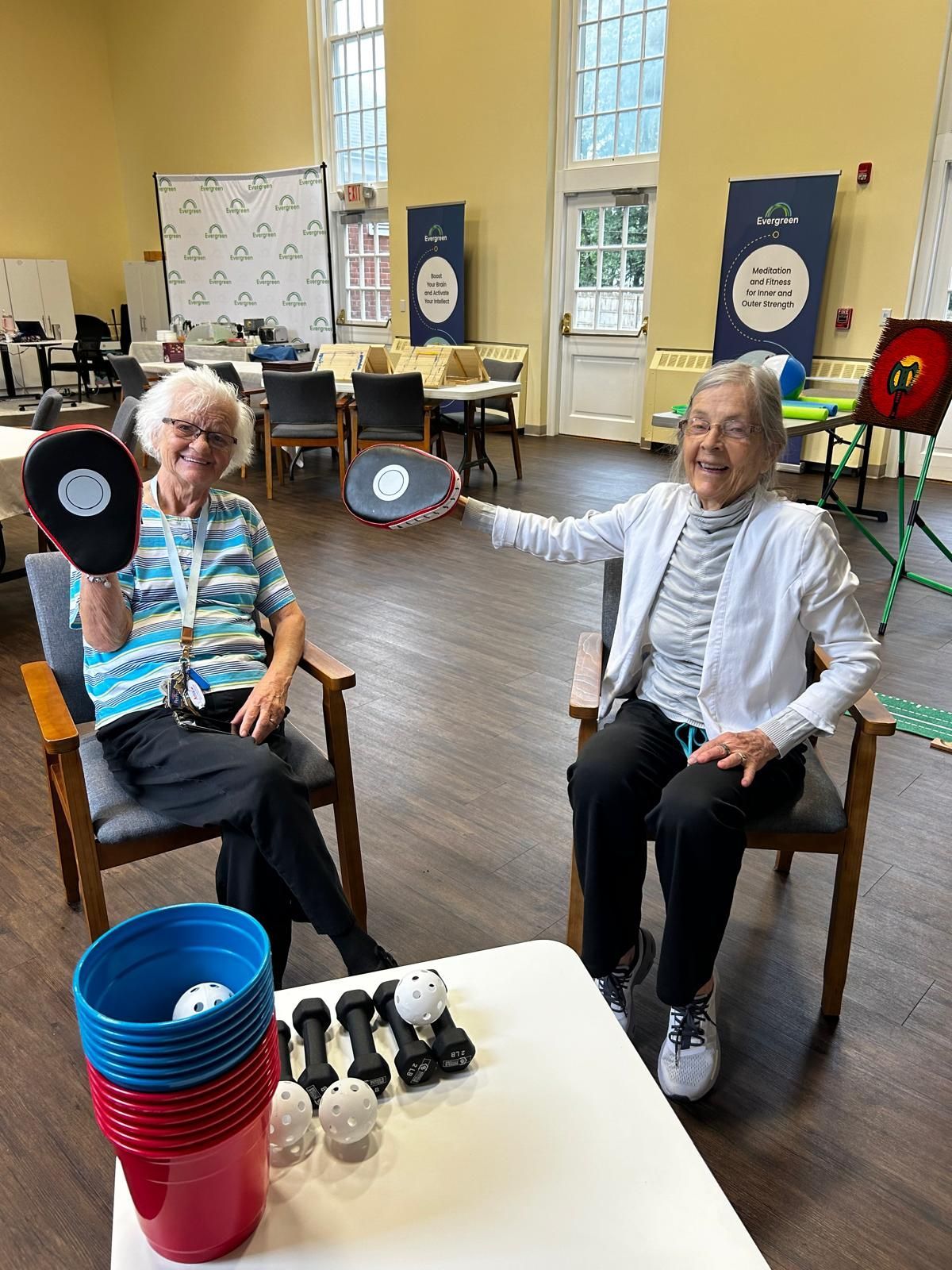Click HERE to RSVP to our Grand Opening on May 15th in Stamford, CT
Questions? Call us: 203-514-7450
The Role of Art in Enhancing Senior Well-being

Art has a magical ability to uplift our spirits and create connections, and this is especially true for seniors. As we age, the importance of maintaining not just our physical health but also our emotional and mental well-being becomes increasingly vital. In this blog, we'll delve into how engaging with art can enrich the lives of older adults, foster creativity, and promote a sense of community and belonging.
Understanding the Connection Between Art and Well-being
It's essential to explore how creativity relates to well-being. Research shows that artistic expression can help reduce stress, alleviate anxiety, and even improve cognitive function in seniors. When seniors engage with art, they are not just creating; they are also participating in a process that can lead to emotional healing and enhanced psychological health.
The act of painting, drawing, or crafting allows seniors to focus on the moment, enabling mindfulness that can alleviate feelings of isolation. This moment-to-moment engagement helps not only in managing mental health but also facilitates a deeper connection to the world around them. For many, art becomes a bridge between their inner experiences and outer realities, fostering a richer exploration of their feelings.
And it's not merely about the art itself; it's about the process. Creating art encourages older adults to set personal goals, whether it’s finishing a painting or improving a skill. This goal-setting aspect can lead to a renewed sense of purpose as they strive to improve, express, and connect with their identity through every brush stroke or clay mold.
The Therapeutic Benefits of Art Therapy
Art therapy offers a structured way for seniors to express their emotions through various mediums. This therapeutic approach utilizes creative processes to help individuals articulate their feelings and thoughts, providing an alternative way to express aspects of life that may be challenging to communicate verbally.
Research shows that art therapy can be particularly beneficial for those dealing with conditions such as dementia or Alzheimer's. Engaging with art can trigger memories and evoke emotions that help individuals reconnect with their own histories. Imagine the beauty of a senior looking at a painted landscape and recalling a cherished moment spent outdoors. This connection fuels their sense of identity and belonging.
Furthermore, the therapeutic aspects of art extend beyond personal reflection; they are also about community healing. Group art therapy sessions allow seniors to bond over shared experiences, creating a space where they feel understood and valued. These connections not only diminish feelings of loneliness but also contribute to the overall mental health of participants, showcasing the profound impact of collective creativity.
Fostering Creativity and Self-Expression
Creativity doesn't have to fade with age. Engaging in creative activities can promote a sense of purpose and boost self-esteem. Here, we will discuss various art forms that seniors can easily participate in, from watercolor painting to crafting jewelry. These activities encourage expression while also being accessible.
One of the most beautiful aspects of art is its inclusivity. It welcomes everyone, regardless of their skill level. Seniors can find joy in the simplest projects, where the act of creating becomes more significant than the final product. For instance, whether it's a simple drawing or an intricate quilt, the effort put into creation fosters pride and fulfillment.
Art classes designed for seniors provide opportunities for social interaction in a casual setting. These classes can stimulate camaraderie, with individuals discussing techniques and sharing ideas as they work alongside one another. This interactivity enhances not just creativity but also builds bonds that nurture friendships and community spirit.
Building Community Through Artistic Activities
Art can bring people together, and for seniors, this sense of community is invaluable. We will explore different community art programs and how they contribute to social engagement. Community art initiatives often encourage collaboration, allowing seniors to work on joint projects, which fosters not only creativity but also a sense of shared accomplishment.
Participating in art festivals or exhibitions showcases their work, validating their efforts in a public setting. This visibility can create a profound impact, instilling a sense of pride and connection with the community. It also opens doors to conversations, allowing seniors to interact with others, share their stories, and feel a part of something larger than themselves.
Moreover, the online sphere has expanded ways in which seniors can connect through art. Virtual art classes and online exhibitions have become increasingly popular, allowing those who may have difficulty traveling to still participate. This innovative approach keeps the community spirit alive, emphasizing that art can truly break geographic barriers.
Sharing Stories: The Narrative Aspect of Art
Every piece of art tells a story, and for seniors, sharing their life experiences through art can be incredibly empowering. This section highlights the importance of storytelling in the art-making process. When individuals express their thoughts through creative media, they are often able to articulate complex narratives that shaped their lives.
Crafts, paintings, or even written works can encapsulate pivotal moments, serving as a reminder of their rich histories. Much like a good book, each creation is an invitation for others to understand and appreciate their journeys. This narrative aspect not only promotes self-reflection but also fosters empathy from the audience, bridging gaps between generations.
By creating art that reflects personal experiences and emotions, seniors can foster connections with others who may share similar stories. These connections nurture community understanding and pave the way for mutual support. Ultimately, storytelling through art offers a pathway for healing, understanding, and acceptance, rewarding both the creator and viewer alike.
Incorporating Art in Senior Living Environments
How can senior living facilities infuse art into their programming? We discuss practical tips and ideas for creating an arts-friendly environment. Initiatives can range from setting up an art studio to organizing regular art classes that cater to varying skill levels. This kind of environment cultivates creativity and provides seniors with a platform to explore their artistic sides.
Another idea is to host art exhibitions within the community, spotlighting residents' work. By giving seniors the opportunity to showcase their art, facilities can enhance feelings of accomplishment and belonging. Furthermore, involving family and external visitors in these exhibitions can help build a sense of unity, nurturing an inclusive atmosphere.
Lastly, integrating outdoor art projects, like gardening or mural creation, allows seniors to engage with nature while also expressing their creativity. These combinations not only beautify the environment but also promote physical activity and well-being, reinforcing the idea that art can be woven into our daily lives in various meaningful ways.
Art as a Lifelong Companion
Incorporating art into the lives of seniors is much more than a creative pastime; it serves as a powerful tool for enhancing overall well-being. Whether through painting, music, or sharing stories, art has the ability to spark joy, ignite passion, and build lasting connections that can transform the aging experience. Let’s continue to champion the role of art in senior care and make it an integral part of our communities.







